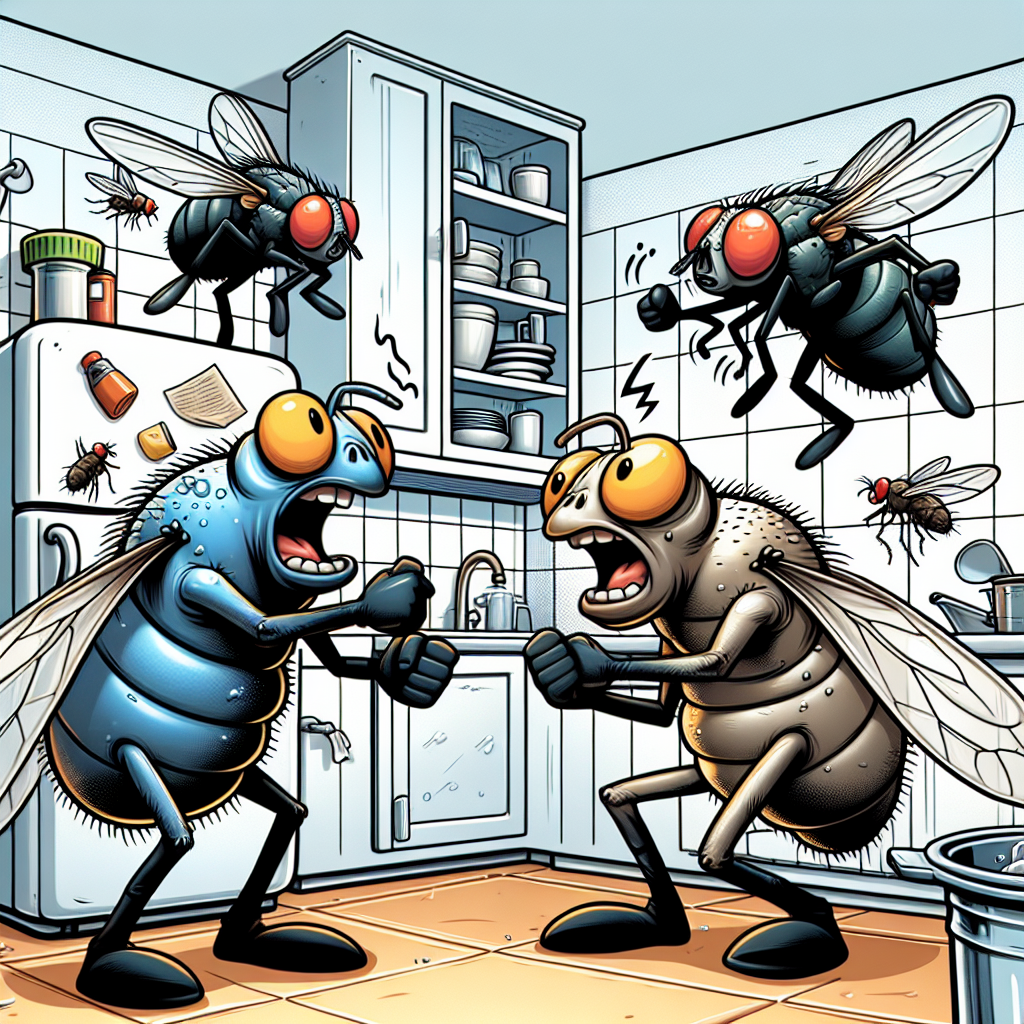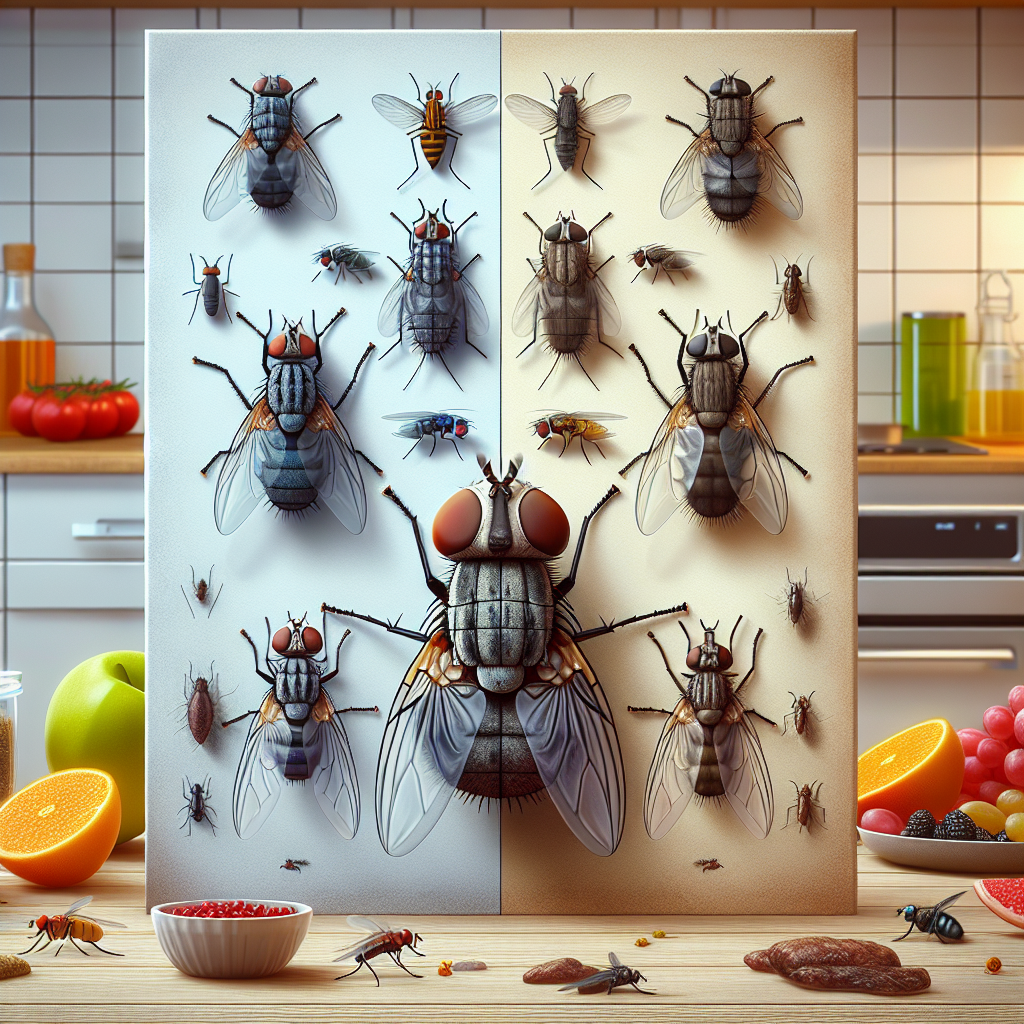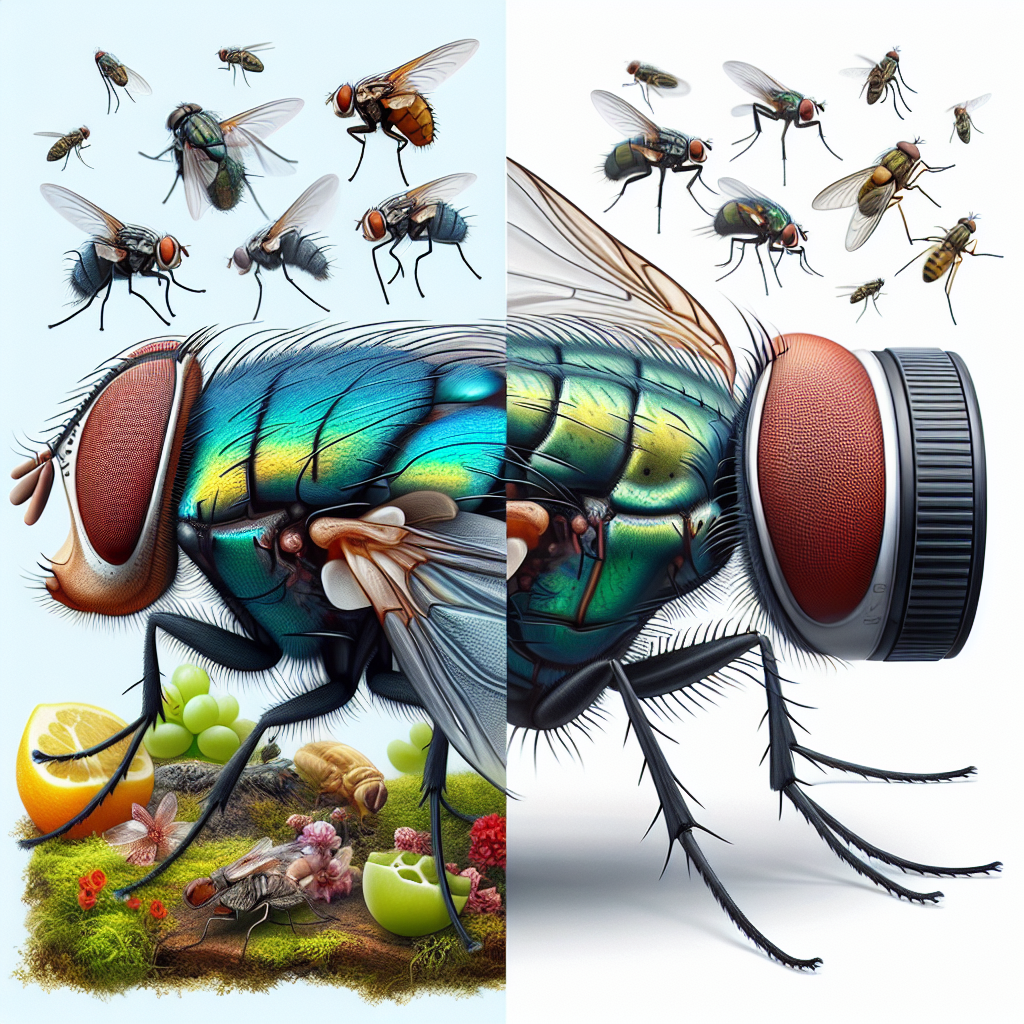Fruit Flies vs Gnats: How to Identify and Eliminate These Pests
Introduction
Welcome to the ultimate showdown of the tiny titans: fruit flies and gnats! You might be wondering, are fruit flies and gnats the same? Spoiler alert: they’re not, but they sure do love to confuse us. These little pests can invade our kitchens and gardens, leaving us scratching our heads and swatting like mad.
In this blog post, we’re diving deep into the fascinating world of these two insects. Think of it as a detective story where we’ll uncover the difference between fruit flies and gnats, explore their similarities, and learn how to identify them without needing a magnifying glass. Whether you’re dealing with an infestation or just curious about these pesky critters, we’ve got you covered!
Key Takeaway: Understanding the differences will help you tackle them effectively because nobody wants to mistake a harmless gnat for a fruit fly that’s plotting to ruin your ripe bananas!
So grab your notepad (or just bookmark this page), and let’s get started on this journey of identifying fruit flies and gnats. By the end, you’ll be the Sherlock Holmes of pest control in your own home!

Understanding the Basics
To get a grip on the pesky little critters buzzing around your kitchen, it’s essential to understand what we’re dealing with. So, let’s dive into the basics of fruit flies and gnats.
Definition of Fruit Flies
Fruit flies, scientifically known as Drosophila melanogaster, are small, winged insects that are typically around 1/8 inch long. They have a tan or yellowish-brown body with red eyes. These little guys are notorious for their ability to multiply rapidly and invade ripe fruits and vegetables. If you’ve ever left a banana out too long, you know what I mean!
Definition of Gnats
Gnats, on the other hand, is a broad term that can refer to several small flying insects, but most commonly refers to two types: fungus gnats and biting midges. Fungus gnats are tiny (about 1/16 inch) and often found buzzing around houseplants or damp areas in your home. They have long legs and slender bodies that can make them look like they’re dancing in mid-air very charming until they invade your space!
Common Habitats for Each Pest
The habitats where these pests thrive differ significantly:
- Fruit Flies: You’ll usually find them near overripe or rotting fruits and vegetables, as well as in areas where sugary substances are present.
- Gnats: These little nuisances prefer damp environments like soil in potted plants or decaying organic matter.
Key Takeaway: While both fruit flies and gnats may be small and annoying, they have distinct differences in appearance, habitat preferences, and behavior. Understanding these basics is crucial for effective identification.

Are Fruit Flies and Gnats the Same?
Ah, the eternal question: are fruit flies and gnats the same? Spoiler alert: they are not! While these tiny nuisances might seem like identical twins at first glance, they actually belong to different families of insects and have distinct characteristics. Let’s dive into the juicy details.
Clarifying Common Misconceptions
First things first, let’s clear up some common misconceptions. Many people mistakenly believe that all small flying insects are either gnats or fruit flies. This is not true! In fact, there are various types of gnats, including fungus gnats and biting midges, while fruit flies (also known as Drosophila) are a specific type of fly that loves to party around your overripe bananas.
Key Point: Not all small flying insects are fruit flies or gnats. It’s crucial to identify which pest you’re dealing with for effective control.
Similarities Between Gnats and Fruit Flies
Despite their differences, there are some similarities between gnats and fruit flies that can lead to confusion:
- Size: Both pests are relatively small, typically measuring less than a quarter-inch long.
- Habitat: They both thrive in moist environments, often found near decaying organic matter or overripe fruits.
- Annoying Presence: They both have a knack for buzzing around your face when you’re trying to enjoy a nice meal outdoors talk about unwelcome guests!
Differentiating Characteristics
If you want to become a gnat vs fruit fly expert (and who wouldn’t?), you’ll need to pay attention to some key distinctions:
- Antennae: Gnats generally have longer, more delicate antennae compared to the shorter ones on fruit flies.
- Bodies: Fruit flies tend to have a more rounded body shape, while many gnats appear slender and elongated.
- Behavior: Fruit flies are attracted specifically to fermenting fruits and vegetables, whereas gnats can also be found around soil or decaying plant material.
The life cycle of these pests also varies significantly. Fruit flies reproduce rapidly in warm conditions, laying hundreds of eggs on fermenting foods within just days!
If you’re still wondering if you can mistake a gnat for a fruit fly yes, it happens! But with these tips under your belt, you’ll be well on your way to distinguishing them like a pro. So next time you see those little critters buzzing about your kitchen or garden, you’ll know exactly what you’re dealing with!

Differentiating Characteristics of Gnats and Fruit Flies
Alright, let’s dive into the nitty-gritty of how to tell these pesky little critters apart. Spoiler alert: they may look similar at first glance, but they each have their own unique flair!
Visual Differences of Fruit Flies and Gnats
First up, the visual showdown! When we talk about fruit flies, think of them as the fashionable ones in the insect world. They sport a tan or light brown body with distinct red eyes. On the other hand, gnats are more like that friend who shows up in all black often small and dark, typically gray or black.
- Fruit Flies: Tan or light brown body with red eyes.
- Gnats: Small, dark bodies most often gray or black.
Behavioral Differences Between Gnats and Fruit Flies
Now, let’s talk behavior. If fruit flies had a personality, they’d be the party animals buzzing around ripe fruits and veggies like they own the place! Meanwhile, gnats prefer a more refined lifestyle, often found around damp soil or decaying organic matter. Think of them as the introverts who hang out in the garden.
Life Cycle of Gnats Versus Fruit Flies
Their life cycles also reveal some interesting differences. Both pests reproduce quickly, but their habitats influence their development stages:
| Characteristic | Fruit Flies | Gnats |
|---|---|---|
| Egg Stage | Lays eggs on fermenting fruits/vegetables. | Lays eggs in moist soil or decaying organic matter. |
| Lifespan | Around 30 days from egg to adult. | Around 20-30 days depending on species. |
| Pupation | Pupates in a dry environment. | Pupates in moist environments. |

The next time you spot one of these little invaders zooming around your kitchen or garden, you’ll know exactly who you’re dealing with. So grab your magnifying glass (or just squint really hard) and get ready to become an insect-identifying pro!
Identifying Fruit Flies and Gnats in Your Home
So, you’ve spotted some little flying critters buzzing around your kitchen, and you’re wondering, are fruit flies and gnats the same? Spoiler alert: they’re not! But don’t worry, we’ll help you distinguish gnats from fruit flies like a pro.
How to Tell Apart Fruit Flies and Gnats
First things first, let’s break it down. To identify these pests, you need to look at a few key characteristics:
- Size: Fruit flies are typically about 1/8 inch long, while gnats can vary from tiny (less than 1/8 inch) to slightly larger.
- Color: Fruit flies are usually tan or yellowish with red eyes. Gnats tend to be darker, often black or gray.
- Antennae: Fruit flies have short antennae compared to the longer ones of gnats.
- Wings: The wings of fruit flies are more pronounced and can appear slightly veined.
Gnat Identification Guide
If you’re still scratching your head about whether you’ve got a gnat or a fruit fly problem, here’s a handy guide:
- Midge Gnats: These guys are often found near standing water. They have long legs and are generally attracted to light.
- Fungus Gnats: Commonly found in houseplants, they’re small and dark. If your plants are looking sad and soggy, check for these little pests!
- No-See-Ums: If you’re feeling like you’re being bitten by invisible creatures, you might be dealing with these tiny buggers. They thrive in humid areas.
What Do Fruit Flies Look Like Compared to Gnats?
The visual differences of fruit flies and gnats can be subtle but crucial for identifying them correctly. Here’s a quick comparison:
| Fruit Flies | Gnats | |
|---|---|---|
| Size | Tiny (1/8 inch) | Tiny to small (varies) |
| Color | Tan/yellowish with red eyes | Darker (black/gray) |
| Antennae | Shorter | Longer |
| Main Attraction | Ripe fruits & vegetables | Moist areas (soil/water) |
Now that you’re armed with the knowledge on identifying these pesky intruders, keep an eye out for their distinct characteristics! In the next section, we’ll dive into pest control strategies tailored specifically for each of these nuisances.
Pest Control Strategies for Both Pests
Now that we’ve established that fruit flies and gnats are not the same, it’s time to roll up our sleeves and dive into some effective pest control strategies tailored for each little menace. Whether you’re dealing with the tiny fruit fly or the pesky gnat, we’ve got you covered!
Pest Control for Fruit Flies
Fruit flies are like that friend who shows up uninvited to every party annoying, but manageable! Here are some strategies to send them packing:
- Clean Up Your Act: Start by removing any overripe fruits or vegetables. These little critters have a nose for fermentation!
- Homemade Traps: Mix apple cider vinegar with a drop of dish soap in a bowl. The vinegar attracts them, and the soap traps them. It’s like a tiny fruit fly spa day gone wrong.
- Cider Vinegar Trap: Place a jar filled with apple cider vinegar covered with plastic wrap (with holes poked in it) near infested areas. They’ll buzz in but won’t buzz out!
- Regular Cleaning: Wipe down surfaces regularly to eliminate any potential breeding grounds. Think of it as giving your kitchen a much-needed spa treatment.
Pest Control for Gnats
Gnats might be small, but their presence can feel like an invasion of tiny ninjas! Here’s how to fight back:
- Identify the Source: Gnats often breed in moist soil or decaying organic matter. Check your houseplants and compost bins these could be their party zones!
- Diatomaceous Earth: Sprinkle this natural powder on top of your plant soil; it’s like putting up a “no entry” sign for gnats.
- Sticky Traps: Use yellow sticky traps around plants to catch these flying nuisances. They’ll be attracted to the color and get stuck talk about an unfortunate fashion choice!
- Avoid Overwatering: Let your plants dry out between waterings. Gnats thrive in damp conditions, so give your plants some breathing room.
Common Methods for Elimination and Prevention
No one wants these pests crashing their home party! Here are some common methods that work wonders against both fruit flies and gnats:
- Aromatherapy Approach: Essential oils like peppermint or eucalyptus can deter both pests. Just mix a few drops with water and spray around affected areas.
- Pest Barriers: Keep windows and doors sealed with screens to prevent any unwelcome guests from entering your home.
- Cultural Practices: Make sure to dispose of trash regularly, especially food waste, which is like an all-you-can-eat buffet for these pests.
- Pest Control Products: If all else fails, consider using insecticidal soaps or sprays specifically labeled for fruit flies and gnats.
Conclusion
So, are fruit flies and gnats the same? The short answer is a resounding no! While they may share some similarities, such as their small size and tendency to invade our personal space, the differences between fruit flies and gnats are significant enough to warrant separate pest control strategies. Understanding how to distinguish gnats from fruit flies is crucial for effective elimination.
To recap:
- Visual Differences: Fruit flies tend to be slightly larger with distinctive red eyes, while gnats are generally more delicate and can be mistaken for tiny mosquitoes.
- Behavioral Differences: Fruit flies are attracted to fermenting fruits and sugary substances, whereas gnats often hang around damp areas like potted plants or sinks.
- Life Cycle Variations: Knowing the life cycle of gnats versus fruit flies can help you tackle infestations at their source fruit flies reproduce quickly in ripe fruits, while gnats thrive in moist environments.
If you’ve spotted these pesky critters buzzing around your home, don’t panic! With our gnat identification guide and pest control strategies laid out earlier in this blog post, you’re now equipped to tackle both pests head-on. Remember, identifying fruit flies and gnats accurately is the first step toward reclaiming your space.
Tangible Takeaway: Next time you encounter a small flying insect in your kitchen or bathroom, take a moment to assess its characteristics. This simple act could save you time and hassle in pest control!
If you’re still unsure whether you’ve got a gnat or a fruit fly problem, don’t hesitate to reach out for professional help. Your home deserves peace and so do you!

